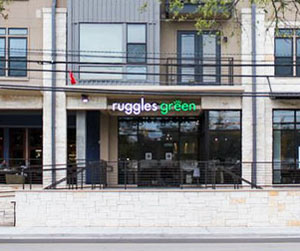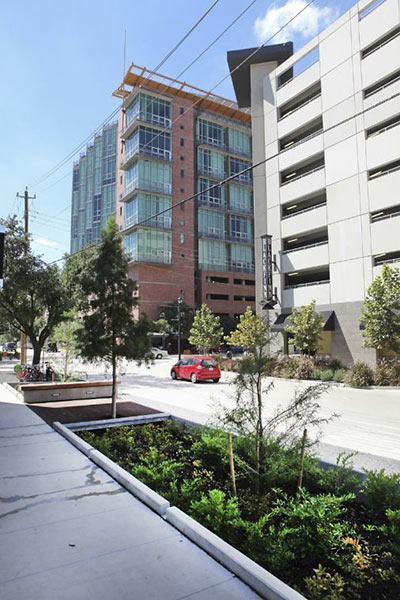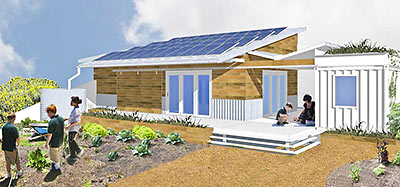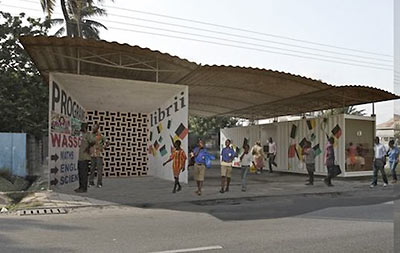TPWD: CHEF INVOLVED IN RUGGLES ESTABLISHMENTS INVOLVED IN GIANT ILLEGAL FISH NETWORK, TOO  Following 2 years of investigation — and the discovery of some 1,900 pounds of illegal red snapper on an unlicensed boat near Freeport — the Texas Parks and Wildlife Department alleged today that Bruce Molzan  (long one of the main players in most of the Ruggles [Blank] establishments around town, most recently Ruggles Black) is tangled up with what may be the largest illegal seafood network ever uncovered in Texas. A press release from the department says the aquatic activities in question, which so far have warranted the handout of some 200 misdemeanor citations, have been going on since 2013. The state’s allegations toward Molzan include the purchase of illegally harvested finfish, as well as illegal shrimp purchases from another restaurant, for inclusion on Ruggles Black’s and Ruggles Green’s implicitly health– and sustainability-minded menus. (Molzan separated from Ruggles Green back in October, after its original W. Alabama location scooted over into the new midrise down the block; the new owners of Ruggles Green say that fish acquisitions since Molzan left have all been by the books.) [TPWD; previously on Swamplot] Photo of Ruggles Green on W. Alabama: Swamplot inbox
Following 2 years of investigation — and the discovery of some 1,900 pounds of illegal red snapper on an unlicensed boat near Freeport — the Texas Parks and Wildlife Department alleged today that Bruce Molzan  (long one of the main players in most of the Ruggles [Blank] establishments around town, most recently Ruggles Black) is tangled up with what may be the largest illegal seafood network ever uncovered in Texas. A press release from the department says the aquatic activities in question, which so far have warranted the handout of some 200 misdemeanor citations, have been going on since 2013. The state’s allegations toward Molzan include the purchase of illegally harvested finfish, as well as illegal shrimp purchases from another restaurant, for inclusion on Ruggles Black’s and Ruggles Green’s implicitly health– and sustainability-minded menus. (Molzan separated from Ruggles Green back in October, after its original W. Alabama location scooted over into the new midrise down the block; the new owners of Ruggles Green say that fish acquisitions since Molzan left have all been by the books.) [TPWD; previously on Swamplot] Photo of Ruggles Green on W. Alabama: Swamplot inbox
Tag: Sustainable Development & Green Design

There are almost 6,000 miles of street in Houston, according to the Memorial Examiner, and now about a half a mile of one in Midtown can call itself remarkable. The Greenroads Foundation, which confers on streets a kind of LEED-like designation, gave its first formal props to a project in Texas to Bagby St. between Tuam and St. Joseph Pkwy., for the $9 million in improvements built along the 0.62-mile span the past few months.
Included in those improvements are bike racks, street furniture, wayfinding signs, wider sidewalks, and narrower, less harrowing crosswalks. (You can see in the photo above that these improvements don’t include burying utilities.) But the designation isn’t meant just to make the lives of pedestrians more aesthetically pleasing: LED lights were installed; rain gardens were put in to help with drainage; “fly ash” concrete, which reduces carbon emissions, was used where possible; and Bagby itself, with its potholes, patches, and cracks, was repaved atop what the Midtown Redevelopment Authority calls “newly stabilized materials” that are supposed to require less maintenance over the long haul.
Here are a few more looks at the transformation:

Here’s a rendering of the classroom studio (and vegetable garden and recycled shipping container) that’s now under construction at the Monarch School in Spring Branch. North of the Katy Fwy. near Kempwood and Gessner, the school serves students with neurological disorders, and it says that the design elements and architecture of this very green 1,120-sq.-ft. studio from Architend will become part of the curriculum:

Andrew Carnegie tried — and now, following his lead, a team with ties to Rice University wants to change the world with libraries, too. If it can raise $50,000 via a Kickstarter campaign, the team, whose 5 members are linked to Rice School of Architecture and Rice Design Alliance, will be able to take its talents to Ghana and build a prototype of this open-source, open-air digital agora it’s calling Librii.
And what, exactly, would it be?
A new report from Rice University’s Shell Center for Sustainability includes a few suggestions for the future of Galveston: step all development back from the beach in anticipation of continuing erosion; use a map of the island’s cataloged geohazards to guide where development should go; or permanently abandon the west end of the island entirely. That third recommendation comes with 2 possible natural enforcement mechanisms: a projected future hurricane headed for the western tip of the island, or a combination of sea-level rise and continuing retreat of the shoreline. All 3 scenarios encourage concentrating residents and visitors in the “higher, thicker, wider” East End. A collaboration between earth scientists and the School of Architecture chock-full of charts and diagrams, the Atlas of Sustainable Strategies for Galveston Island includes a series of large-scale design proposals cooked up by Rice architecture students.
A reader calls attention to this Chronicle letter to the editor from Pamela R. Zuteck of Clear Lake Shores:
Regarding “Texans can pay extra to rebuild the eco-friendly way if their home is hit by disaster†(Page A1, Sunday), trying to “go green†using Houston’s contractors will make you throw up your hands. They are clueless or resistant to even simple things like low-VOC paint. Product suppliers are hard to find or too far away to be practical. We saw Ike as a real opportunity to step it up but have met frustration at every turn. There’s no help out there. It was a victory just to get a few items, like Hardiplank removable interior wallboard. We had to do all the research and coordination, then design and supervise every step of installation. We sorted the waste for recycling. No wonder more people don’t go green. It’s just too hard.
Writes our reader:
I have no reason to doubt the contentions, but am stumped at the writer’s mention of “Hardiplank removable interior wallboard.†Since your reader/participants are so very knowledgeable, could you ask them to weigh in? My search of the internets provided nada.
- Hard being green [Houston Chronicle]
RECYCLING HOUSTON BUILDING PARTS A new city-run Reuse Warehouse that’s been open for just 2 weeks at 9003 N. Main St. (just north of Crosstimbers) is designed to reduce the amount of excess building materials dumped into landfills. The warehouse accepts donations of extra building materials, and offers them for free to nonprofit organizations. What can you donate? “Cabinets, copper, doors, electrical fixtures and equipment, fans, flooring material, glass, gutters, hardware, lighting, lumber, metal, mirrors, pipe, plumbing, plywood, roofing material, screens, sheetrock, sinks, showers, trim, tubs, wall coverings, or windows” but no paint. “More than one-third of the waste stream in the Houston area is made up of construction and demolition material.” [Green Houston, via Hair Balls]

